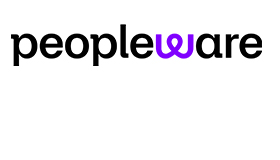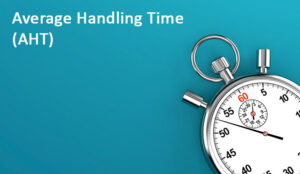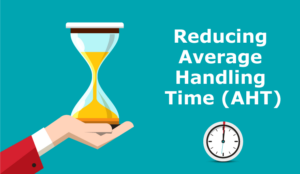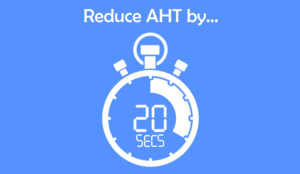Charles Watson, on behalf of injixo, discusses how to lower average handle time (AHT) without disrupting things for customers.
Reducing AHT will lower costs, but it can easily lead to bad call quality and customer dissatisfaction. However, if done right, you will get the one without losing the other.
Defining Average Handle Time (AHT)
Planning for workload in the contact center is one of the core functions of any workforce management team. A lot of work goes into identifying the various trends and drivers to workload.
Workload is calculated by multiplying the forecasted volume of customer contacts by the forecasted handle time. This gives you the total number of minutes you need to plan for.
Handle time is often referred to as AHT. AHT is an acronym that stands for average handle time. It is the aggregate of 3 components: talk time, hold time and after-call work.
Each of these components is usually reported by their averages as well – average talk time, average hold time and average after-call work time.
The average is simply adding up all of the minutes spent in each state divided by the total number of calls handled. Let’s explore each component’s definition and some best practices in managing them while preserving quality.
Components of AHT
Average talk time – This is the time an agent spends actively communicating with a customer. So if a call is active and the agent is engaged, this time counts toward talk time.
This time starts tracking from the time a call starts until the call is disconnected (with the exception of hold time, which we’ll cover next).
Average hold time – This is the time an agent has a customer on hold. For example, if an agent has 10 minutes of hold time and has taken 10 calls, the average hold time is 1 minute.
If that person had 10 minutes of hold time and had taken 5 calls, the average hold time is 2 minutes.
It doesn’t matter if it was one call put on hold for 10 minutes, or 5 calls that were on hold for 2 minutes.
Average after-call work time – This is the time an agent is working after the call has been disconnected. In most cases, they select “ACW” to go into this state. This prevents another contact from coming in until they are ready. In some cases, agents are put into an automatic ACW state without having to press a button.
The calculation works the same as for average hold time. It’s the total number of minutes spent in after call work time divided by the total number of calls handled.
What Is the Right AHT?
This is a question that I hear a lot. And I’ve seen this managed any way you can think of. I’ve seen operations leaders who heavily incentivize low handle times, and I’ve seen operations leaders who don’t believe it should be managed at all.
As you can imagine, the first approach results in low handle times, but often leads to low quality and customer dissatisfaction. A relaxed approach of not managing it leads to higher costs.
Ultimately, you need to tie your handle time targets to your business objectives. When you can, it’s good to link it to your customer satisfaction metrics.
What handle time gives you the best customer satisfaction (CSAT)? That’s a good starting point and something you’ll want to understand.
Beyond CSAT, you need to look at your other objectives. If your objective is to increase revenue, or make sales, you may be OK with a higher handle time.
You can set your target handle time by looking at the handle time of the agents with the best revenue generation.
If your objective is to keep costs low because you’re a service center, then you’ll want to strive for lower handle times. You can look at the top agents’ customer satisfaction and set your target at the average of the top 30-40% of agents.
4 Best Practices to Reduce AHT Without Impacting Quality
Monitoring and coaching are key. Monitor your agents regularly and observe a few key areas:
- Call control: How effectively are they managing the pace of the call? Long calls with a lot of “dead air” drives up handle time and is a poor customer experience. You want your agents to control the call and the pace of the call to drive resolution efficiently.
- Technical proficiency: How do your agents navigate your technical systems? If they have to constantly go back and forth across several different systems, could this be simplified? If not, are they navigating as efficiently as possible? Do you notice they unnecessarily go to systems they don’t need because they don’t always know where to go? This is a great place to coach to tighten up their technical skills.
- Product knowledge: Do they understand the products you’re selling and are they servicing without having to constantly look up details? An experienced agent should know many of the details without having to look them up. This saves time and makes a more efficient experience for your customers. If you see the potential for your agents to improve here, you might want to arrange some training and coaching sessions.
- Multitasking: Lastly, how well do your agents multitask? Multitasking includes documenting critical information while talking to the customer. When they effectively multitask, they document while they have access to the customer (so they can ask clarifying questions). This reduces the after-call work time needed.
Why AHT Matters for Workforce Management
First, it’s important to understand what the projected AHT is, how volatile it is over time, and how consistent the fluctuations repeat themselves in certain time intervals. This is critical in building staff plans because they are based on the forecasted workload.
And the forecasted workload – as explained above – consists of the forecasted contact volumes multiplied with the forecasted AHTs.
Second, the WFM teams should communicate their observations about the fluctuations of AHT to other teams in the contact center and make recommendations.
Do you notice that AHT is higher or lower on the weekends? If so, is this due to the type of people calling in or the effectiveness of the agents taking the calls?
WFM isn’t the group that would do analysis on this in most organizations, but your observations and call-outs can help focus the efforts of the organization to reduce AHT.
This blog post has been re-published by kind permission of Peopleware – View the Original Article
For more information about Peopleware - visit the Peopleware Website
Call Centre Helper is not responsible for the content of these guest blog posts. The opinions expressed in this article are those of the author, and do not necessarily reflect those of Call Centre Helper.
Author: Peopleware
Published On: 16th Jun 2020 - Last modified: 26th Feb 2025
Read more about - Guest Blogs, Average Handling Time (AHT), Peopleware






 Peopleware is a leading workforce management (WFM) solution, trusted by over 500,000 users in 30+ countries. With smart forecasting, automated scheduling and real-time management, organizations can optimize workforce efficiency and keep work aligned with demand. From precise time tracking to flexible planning, Peopleware helps organizations boost operational efficiency and foster a more engaged, productive workforce.
Peopleware is a leading workforce management (WFM) solution, trusted by over 500,000 users in 30+ countries. With smart forecasting, automated scheduling and real-time management, organizations can optimize workforce efficiency and keep work aligned with demand. From precise time tracking to flexible planning, Peopleware helps organizations boost operational efficiency and foster a more engaged, productive workforce. 









